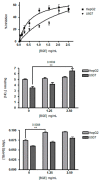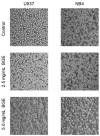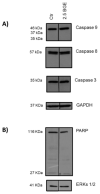Metabolite Profile and In Vitro Beneficial Effects of Black Garlic (Allium sativum L.) Polar Extract
- PMID: 34444931
- PMCID: PMC8398518
- DOI: 10.3390/nu13082771
Metabolite Profile and In Vitro Beneficial Effects of Black Garlic (Allium sativum L.) Polar Extract
Abstract
Over the centuries, humans have traditionally used garlic (Allium sativum L.) as a food ingredient (spice) and remedy for many diseases. To confirm this, many extensive studies recognized the therapeutic effects of garlic bulbs. More recently, black garlic (BG), made by heat-ageing white garlic bulbs, has increased its popularity in cuisine and traditional medicine around the world, but there is still limited information on its composition and potential beneficial effects. In this study, the metabolite profile of methanol extract of BG (BGE) was determined by high-performance liquid chromatography coupled to tandem mass spectrometry in high-resolution mode. Results allowed to establish that BGE major components were sulfur derivatives, saccharides, peptides, organic acids, a phenylpropanoid derivative, saponins, and compounds typical of glycerophospholipid metabolism. Characterization of the BGE action in cancer cells revealed that antioxidant, metabolic, and hepatoprotective effects occur upon treatment as well as induction of maturation of acute myeloid leukemia cells. These results are interesting from the impact point of view of BG consumption as a functional food for potential prevention of metabolic and tumor diseases.
Keywords: LC-ESI/LTQOrbitrap/MS/MS; black garlic; cancer cells; cellular bioactivity; methanol extract; secondary metabolites.
Conflict of interest statement
The authors declare no conflict of interest.
Figures






References
MeSH terms
Substances
LinkOut - more resources
Full Text Sources
Medical

